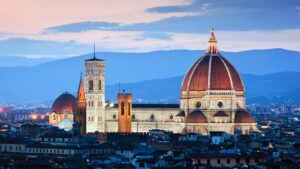Traveling to India offers an adventure that’s as rich in spiritual enlightenment as it is in cultural experiences. From the snowy peaks of the Himalayas to the tropical beaches of Goa, every traveler finds something that speaks to their soul in this vibrant country. However, navigating the vast differences from region to region can be a challenge, especially for first-time visitors.
India Travel Tips
 Planning a trip to India requires careful consideration of several key aspects to ensure a smooth and enjoyable experience. Choosing the right time of year to visit is crucial, as the climate varies significantly across different regions. The ideal months for travel are typically from October to March, when the weather is more favorable across most of the country.
Planning a trip to India requires careful consideration of several key aspects to ensure a smooth and enjoyable experience. Choosing the right time of year to visit is crucial, as the climate varies significantly across different regions. The ideal months for travel are typically from October to March, when the weather is more favorable across most of the country.
Securing a visa is another essential step. Travelers can apply for an e-Visa, which is available for citizens from more than 160 countries, making the process more accessible and efficient. It’s important to check the eligibility criteria and apply well in advance of the planned travel date.
Lastly, health precautions are vital. Vaccinations for hepatitis A, typhoid, and tetanus are commonly recommended, and taking precautions against mosquitoes can help prevent diseases like dengue and malaria. Consulting a travel health professional several weeks before departure can provide personalized advice and any necessary vaccinations.
Packing Essentials for India
Packing for India requires attention to detail due to the country’s vast climatic variations and cultural norms. Travelers must ensure they bring items that address both comfort and respect for local customs.
- Appropriate Clothing: Packing clothes that suit the hot, humid weather typical in areas like Goa is crucial, yet it’s equally important to include attire for cooler climates if visiting the Himalayas. Opt for loose, breathable fabrics such as cotton or linen. Additionally, carrying shawls or scarves can aid in covering up when visiting religious sites.
- Travel Health Kit: India’s different environmental factors necessitate a well-equipped travel health kit. Include items like mosquito repellent, sunscreen SPF 30 or higher, hand sanitizer, and diarrhea medication.
- Electronic Accessories: A universal travel adapter is essential since India’s electrical sockets can vary. Adding a portable power bank ensures travelers keep their devices charged during long outings.
Staying Healthy and Safe
 Travelers can maintain their health and safety in India by following a few essential practices. Consuming bottled water rather than tap water reduces the risk of gastrointestinal illnesses. Local food stalls offer delightful treats, however, choosing those with high turnover ensures fresher options. They should also carry hand sanitizer and use it frequently, especially before eating.
Travelers can maintain their health and safety in India by following a few essential practices. Consuming bottled water rather than tap water reduces the risk of gastrointestinal illnesses. Local food stalls offer delightful treats, however, choosing those with high turnover ensures fresher options. They should also carry hand sanitizer and use it frequently, especially before eating.
Checking travel advisories and local news helps tourists stay informed about any regional issues or health warnings, which in turn makes their journey safer. They should register their presence with their home country’s embassy upon arrival in India for additional security.
Moreover, they should maintain a cautious approach to personal safety, particularly in crowded public places. Keeping valuables secure and maintaining a low profile deters unwanted attention and minimizes risk.
Navigating Transportation in India
 Navigating transportation in India involves mastering various modes of travel, each offering a unique experience. Buses, trains, and auto rickshaws dominate as popular options. Trains connect major cities and remote regions efficiently, displaying India’s geographical diversity. For shorter distances within cities, auto rickshaws and taxis provide flexible, though sometimes chaotic, transport solutions.
Navigating transportation in India involves mastering various modes of travel, each offering a unique experience. Buses, trains, and auto rickshaws dominate as popular options. Trains connect major cities and remote regions efficiently, displaying India’s geographical diversity. For shorter distances within cities, auto rickshaws and taxis provide flexible, though sometimes chaotic, transport solutions.
Travelers find the railway system extensive and budget-friendly, with classes ranging from luxurious to economical. Booking tickets in advance through the IRCTC app simplifies the process, ensuring travelers secure their preferred travel arrangements. Meanwhile, buses offer widespread coverage and are accessible online through platforms like RedBus, which lists timetables and ticket prices.
Given India’s traffic congestion, tourists must allow ample travel time. It’s advisable to rely on GPS and local advice when planning routes, especially during festivals and peak hours.
Top Destinations to Explore
Venturing into India offers an enriching journey filled with vibrant landscapes and profound traditions. Armed with practical tips and a keen awareness of local nuances travelers can immerse themselves fully in what India has to offer. From the majestic Himalayas in the north to the serene backwaters in the south each destination in India tells a unique story. As travelers navigate through bustling cities and tranquil countryside they’ll find that each experience enriches their understanding and appreciation of this dynamic country.

